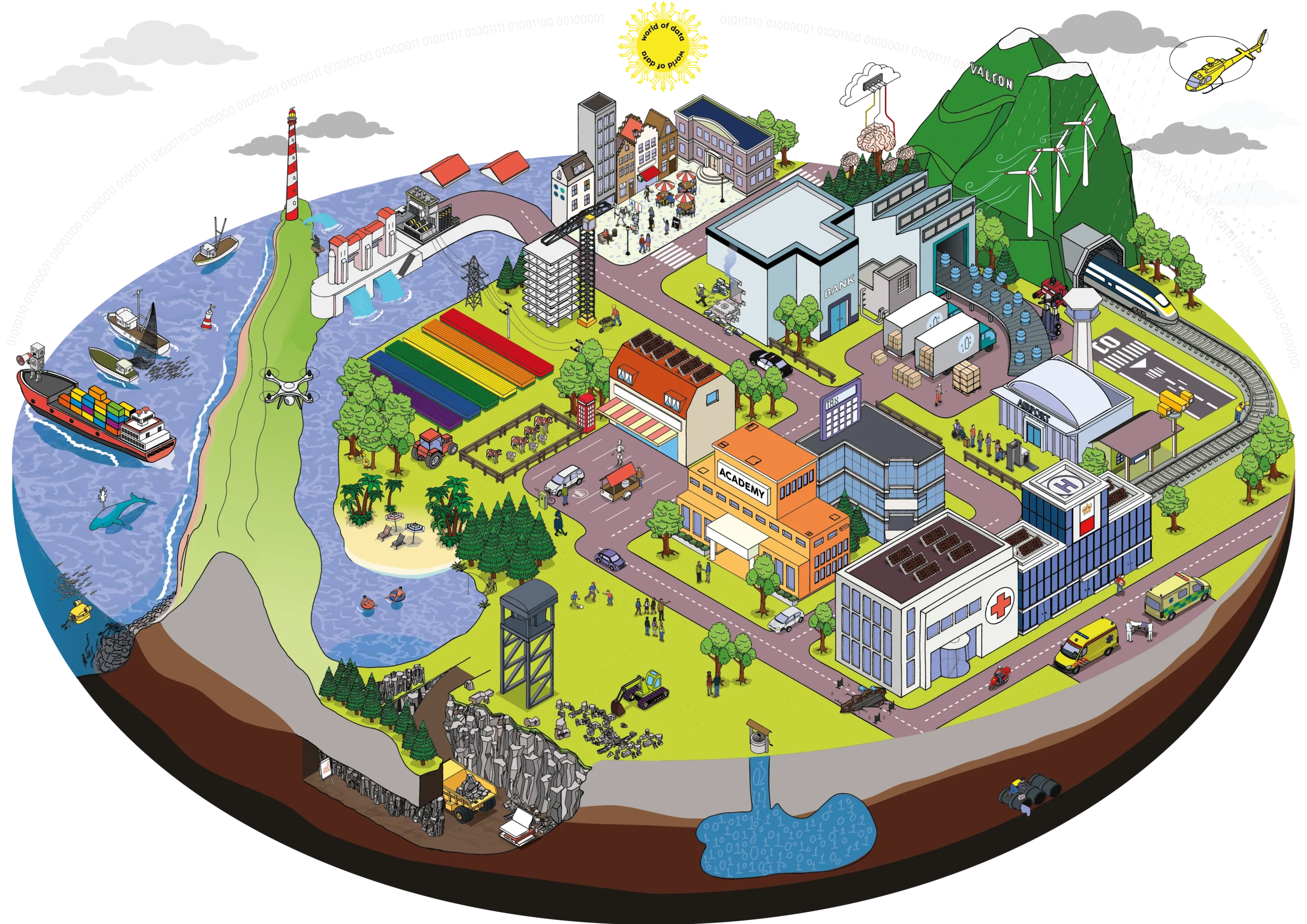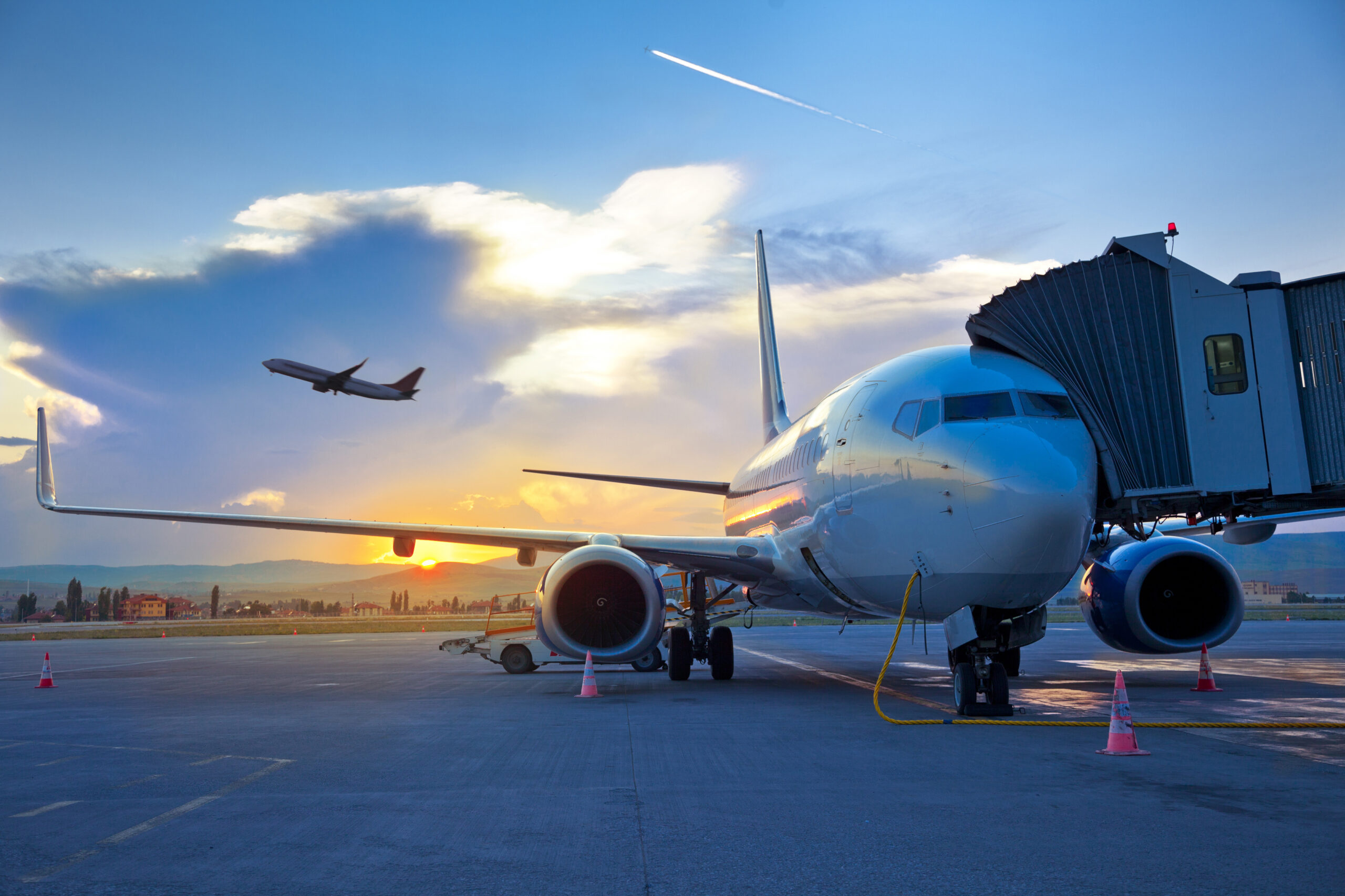Airports are more than transit hubs. They operate as small cities, with a considerable environmental footprint and an evident impact on both health of airport workers and nearby communities. But with the drive to sustainability and the ongoing energy transition, the aviation sector is under growing pressure to reduce emissions and improve air quality.
Can an airport – the beating heart of global air travel – truly become sustainable and an industry that’s so deeply connected to fossil fuels reinvent itself for a cleaner future? And what does the drive to sustainability mean for those on the ground – the airport managers, operational leaders and sustainability experts? Innovation, collaboration and bold choices will undoubtedly shape the transformation they need to make.
Airports and a commitment to sustainability
Airports face growing pressure to address sustainability challenges, driven by burgeoning environmental regulation, public scrutiny and health-related concerns. A key pillar of airport sustainability – as defined both by international policy and local strategies – is the reduction of both CO₂ emissions and harmful substances such as nitrogen oxide (NOx) and ultrafine particles (UFPs). These all result from aircraft engines and diesel-powered ground service equipment (GSE).
Reducing CO₂ directly supports global climate goals, as outlined in the Paris Agreement¹ and lowering other emissions is crucial for improving air quality and protecting the health of airport workers and local communities. Multiple studies have shown that exposure to air pollution near airports can increase health risks, including respiratory and cardiovascular issues².
However, becoming more sustainable is not just about airport ground operations. The entire aviation sector faces complex challenges, including the development of hydrogen-powered aircraft, the scale-up of synthetic kerosene (SAF) and the exploration of electric flight. These solutions are still in the early stages and require copious research, time, investment and collaboration across the industry.
Policy frameworks driving sustainable airport action
To support this transition, regulatory frameworks are being introduced at all levels – global, European and national.
One example is the International Civil Aviation Organisation’s (ICAO) CORSIA³ scheme. This focuses on CO₂ reduction at the global level. The European Union’s Fit for 55⁴ package, promotes sustainable fuels and introduces emission pricing. In the Netherlands, the Aviation Policy Note⁵ (Luchtvaartnota 2020–2050) plays an important role on creating a more sustainable aviation sector. It links aviation development to stricter targets for climate, air quality and health. These regulatory programs indicate that the aviation sector is moving toward more comprehensive climate and health strategies on a global and local level.
As a result, airports across the globe are stepping up their sustainability efforts with ambitious goals and innovative solutions. Major airports such as Heathrow, Frankfurt, Schiphol and Singapore Changi have pledged to reach net-zero emissions by 2050, in line with the Destination 2050 roadmap⁶.
Above and beyond
Some airports are even setting more ambitious targets. Oslo Airport has achieved near climate-neutral operations since 2019 by focusing on sustainable energy use and emission reductions, including phasing out fossil-fueled ground support equipment. Stockholm Arlanda Airport aims to become completely fossil-free by 2030. It invests in electric vehicles, renewable energy from solar panels and heat pumps, and advanced energy storage systems. Schiphol Airport is targeting zero-emission ground operations by 2030. This includes an expanding fleet of electric baggage tractors, buses and pushback vehicles, supported by real-time ultrafine particle monitoring on the apron.
These airports are moving beyond carbon reduction. Their ambitions include zero-waste operations, circular use of materials and producing more renewable energy than they consume. While some of these initiatives are still scaling up, they represent tangible steps toward a cleaner and more sustainable aviation sector.
Four core challenges on the road to cleaner airports
Despite ambitious goals and promising innovations, airports still face significant challenges in making sustainable operations the new standard. Cleaner air and a sustainable airport require systemic changes. Oslo Airport has made these gains by focusing on sustainable energy use and emission reductions – but the challenges are complex, spanning process, people, product and partnerships.
The 4P-framework offers a practical way to understand and address these multi-faceted challenges. It shows how each area both influences and is affected by air quality, and why lasting progress depends on integrated, system-wide change:
- Process: operations on the airside are highly complex, involving tightly scheduled procedures, layered safety protocols and infrastructure constraints. Adjusting ground movement or vehicle flow demands cross-departmental coordination.
- People: the health risks are concentrated among those working nearest to emissions sources, e.g. baggage handlers, ramp agents, technicians. Protective gear helps but only goes so far without broader mitigation strategies and clear communication.
- Product: many airports still rely heavily on diesel-powered ground support equipment. The transition to cleaner technologies is urgent but complicated by fossil fuel dependence and limited data on emissions during engine idling and other operations.
- Partnerships: effective air quality improvement demands alignment among airport authorities, airlines, ground handlers, regulators and others. Even when goals match, differing priorities or timelines can slow progress.
According to the European Union Aviation Safety Agency’s (EASA) 2022 Environmental Report⁷, particle emissions from ground operations contribute significantly to local air pollution around airports. While regulatory programs at global, European and national levels are emerging, clear and enforceable international standards for ultrafine particles and other pollutants remain limited. This lack of uniformity in benchmarks makes coordinated, consistent action across the sector more difficult.
Turning challenges into opportunities: innovation at work
Despite the complexity, momentum is building. Airports are proactively embracing sustainability, not just to comply with regulations but to safeguard health, reduce emissions and future-proof their operations. This shift reflects a growing awareness within the sector that sustainability is not only a compliance imperative, but also a strategic opportunity.
To illustrate this shift, we revisit the same 4P-framework – process, people, product and partnerships – through the lens of innovation and proactive change:
- Process: airports are redesigning ground procedures, from optimised pushback and stand allocation to electric taxiing trials. Real-time air quality data is integrated into operational dashboards.
- People: this relates to tailored awareness programs, better shift planning and custom respiratory protection that will help to reduce direct exposure. Engagement from employee councils will strengthen adoption.
- Product: rapid electrification of GSE is underway, with investment in smart charging, solar-fed microgrids and emission-free tow vehicles. Sensor networks are now able to detect ultrafine particle concentrations in real time.
- Partnerships: Schiphol Airport collaborates with manufacturers and the Dutch government to speed up electrification of ground support equipment, including electric buses and baggage tractors, supported by public funding. These partnerships reduce emissions and serve as a model for other airports. And Oslo Airport is also advancing electric ground vehicles and charging infrastructure through cooperation with local authorities and suppliers, aiming for zero-emission apron operations by 2030.
Leading through transformation
For airports and the aviation sector, the move towards cleaner air and sustainability is more than just implementing new innovative technologies – it requires a fundamental shift across all airport operations. This involves close collaboration and knowledge sharing between multiple stakeholders, implementing new innovative technologies and design and implement operational processes that can quickly adapt to evolving environmental demands. If airports and airlines tackle these sustainability challenges head on, they have the opportunity to significantly reduce their carbon footprint and improve air quality. And that’s good news for the planet, passengers, workers and broader communities. There is no time to waste.
How can Valcon help?
At Valcon, we help our airport and aviation clients with the transition towards more sustainable operations. This includes helping our clients with design strategies that work in practice – we’ve guided airports through optimizing ground operations to enable the use of electric ground support equipment and facilitated collaboration between multiple stakeholders to align sustainability goals.
Through hands-on experience, we’ve learned that effective change requires a strong vision and realistic implementation steps. Our approach is grounded in experience across complex, multi-party environments. We work closely with teams on the ground to translate policy and system change into workable, resilient operations, without losing sight of the ground operations.
If you are interested in speaking to Valcon about airport sustainability or our broader aviation capability, please contact:
Steven van der Kruk – [email protected]
Pim van Reekum – [email protected]
Tom Kempenaar – [email protected]
Nard Timmermans – [email protected]
Sources
- UNFCCC.The Paris Agreement. Available at: https://unfccc.int/process-and-meetings/the-paris-agreement
- Transport & environment. Can living near an airport make you ill? Available at: https://www.transportenvironment.org/articles/can-living-near-an-airport-make-you-ill
- ICAO. CORSIA: Carbon Offsetting and Reduction Scheme for International Aviation. International Civil Aviation Organization. Available at: https://www.icao.int/environmental-protection/CORSIA/Pages/default.aspx
- European Union. Fit for 55 climate package. Available at: https://climate.ec.europa.eu/eu-action/fit-55_en
- Dutch Ministry of Infrastructure and Water Management. Aviation Policy Note 2020–2050 (Luchtvaartnota). Available at: https://www.luchtvaartindetoekomst.nl/onderwerpen/l/luchtvaartnota-2020-2050
- Airlines for Europe (A4E). Destination 2050 – A route to net zero European aviation. Available at: https://www.destination2050.eu/
- European Union Aviation Safety Agency (EASA). European Aviation Environmental Report 2022. Available at: https://www.easa.europa.eu/sites/default/files/eaer-downloads//230217_EASA%20EAER%202022.pdf













